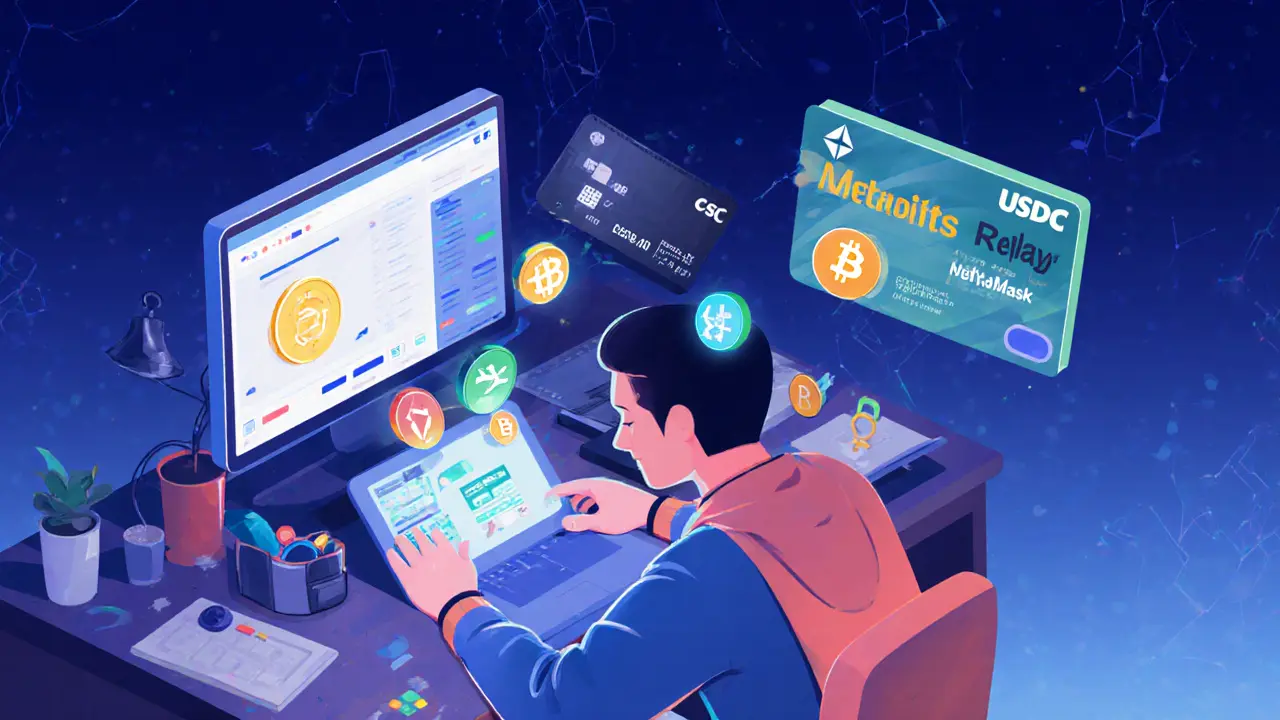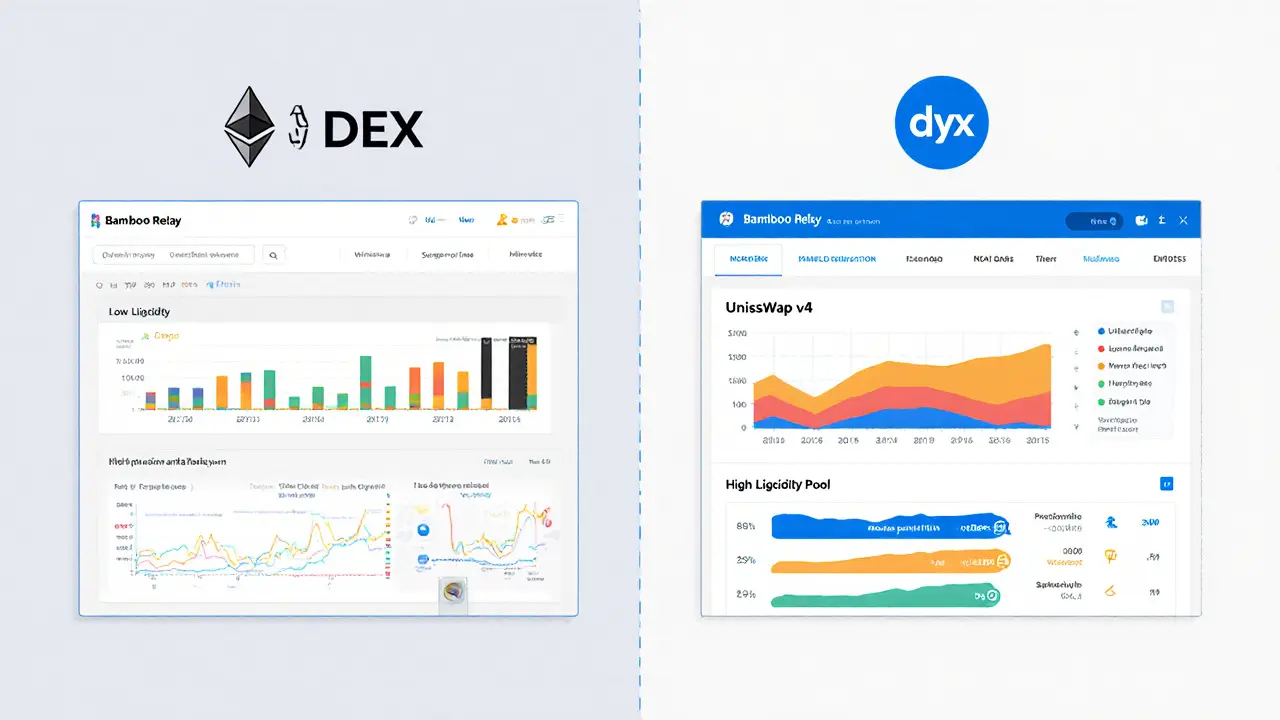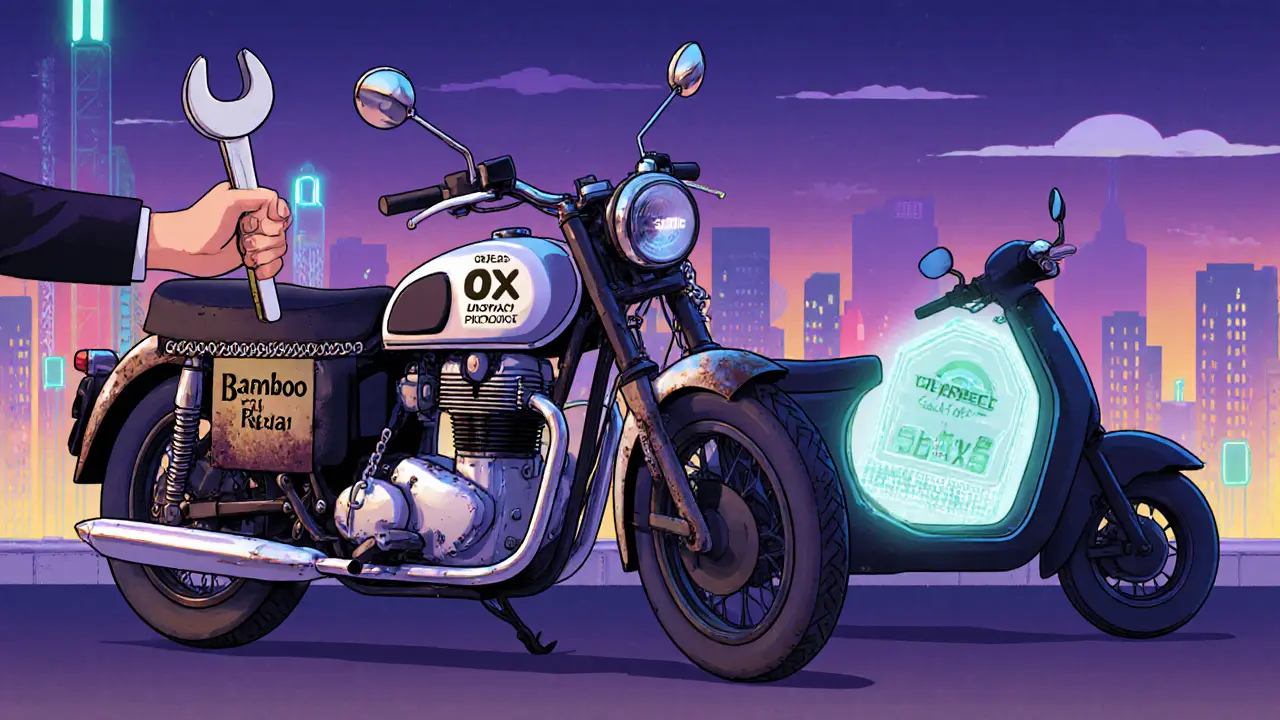Bamboo Relay Crypto Exchange Review: Is This Decentralized Platform Still Viable in 2025?
 Feb, 7 2025
Feb, 7 2025
Bamboo Relay Fee Calculator
Calculate Your Trade Cost
Your estimated total cost will appear here after calculation
How Bamboo Relay Compares
For reference: Centralized exchanges often include gas fees in their fees or charge slightly higher rates (0.2-0.5%) but don't require users to pay separate gas fees on the Ethereum network.
When you hear "crypto exchange," you probably think of Binance, Coinbase, or Kraken-big platforms where you click a button, deposit cash, and trade. But what if you want to trade without handing over your keys? That’s where Bamboo Relay comes in. Launched in 2017, it’s one of the older decentralized exchanges (DEX) still around. But in 2025, is it still worth using? Or has it been left behind by faster, deeper, more user-friendly platforms?
What Is Bamboo Relay, Really?
Bamboo Relay isn’t a traditional exchange. It doesn’t hold your coins. It doesn’t have a customer support team you can call. It’s a relayer-a middleman that connects buyers and sellers using the 0x protocol a decentralized protocol for peer-to-peer Ethereum token trading. Think of it like a bulletin board where traders post orders, and the 0x protocol matches them directly on the Ethereum blockchain. Your wallet-usually MetaMask a browser extension wallet for Ethereum and ERC-20 tokens-does all the heavy lifting. You sign trades yourself. No one else touches your funds.It also integrates with the bZx protocol a DeFi platform for margin trading and lending on Ethereum, which lets you trade on leverage. That’s rare for a DEX. Most DEXes only do spot trading. Bamboo Relay lets you borrow crypto to amplify your positions-without needing to switch platforms.
How It Works: No KYC, No Middleman
Here’s the simple flow:- Install MetaMask or another Ethereum wallet.
- Deposit ETH or an ERC-20 token like USD Coin a stablecoin pegged to the US dollar and issued by Circle or ChainLink a blockchain oracle network token.
- Connect your wallet to Bamboo Relay’s website.
- Place a buy or sell order. You’re either a maker (adding liquidity) or a taker (filling someone else’s order).
- Trade executes on-chain. You pay gas fees. That’s it.
No ID. No email. No bank account verification. That’s the whole point. If you care about privacy, this is a big win. But if you’re new to crypto, this setup can feel like driving a manual car without a manual.
Fees: Competitive, But Not Always Cheaper
Bamboo Relay uses a maker-taker model:- Makers pay 0.1% per trade (you’re adding liquidity)
- Takers pay 0.2% per trade (you’re taking liquidity)
That’s better than many centralized exchanges that charge flat 0.3% to 0.5%. Binance, for example, charges 0.1% for makers and 0.1% for takers-if you pay with BNB. Bamboo Relay doesn’t have a token discount system. So if you’re trading small amounts, you’re paying the full 0.2%.
But here’s the catch: gas fees on Ethereum can easily add $5-$20 to each trade during busy times. So while Bamboo Relay’s fees look good on paper, your real cost might be higher than on centralized exchanges that absorb gas costs for you.
What You Can Trade
Bamboo Relay only supports Ethereum-based tokens. According to CryptoRival a crypto exchange review platform, the listed tokens include:- USD Coin (USDC)
- ChainLink (LINK)
- Wrapped Bitcoin (WBTC)
That’s it. No Solana tokens. No Polygon. No new memecoins. If you’re trading outside the Ethereum ecosystem, this isn’t your platform. And while the site claims to support “many ERC-20 tokens,” the actual order book is shallow. You’ll find low liquidity for most pairs. That means slippage-your trade might execute at a worse price than you expected.

The Credit Card Trick: A Rare Feature
Here’s where Bamboo Relay stands out: you can buy crypto with a credit card.Most DEXes require you to already own ETH or stablecoins. You have to buy them on Coinbase first, then send them over. Bamboo Relay skips that step. It integrates with Carbon a digital manufacturing platform that also enables fiat-to-crypto on-ramps to let you deposit USD via credit card directly into your wallet through the platform.
This is unusual for a DEX. Even Uniswap doesn’t do this. It’s a big convenience for users who want to jump straight into DeFi without using a centralized exchange. But there’s a catch: Carbon’s fees aren’t disclosed on Bamboo Relay’s site. You might pay 3-5% in processing fees, which wipes out any savings from the low trading fees.
Security: No Hacks, But You’re On Your Own
Bamboo Relay has never been hacked. That’s because it doesn’t hold your money. All trades happen directly between wallets. No central server to break into.But that also means if you lose your private key, or send funds to the wrong address, there’s no recovery. No customer service. No refund. Your wallet is your bank. If you’re not comfortable with that, this isn’t the platform for you.
Also, the smart contracts powering the 0x and bZx protocols have been audited, but audits don’t guarantee safety. DeFi is still new. Bugs happen. Always test with small amounts first.
How It Compares to Other DEXes
| Feature | Bamboo Relay | Uniswap v3 | Curve Finance | Bybit (CEX) |
|---|---|---|---|---|
| Type | DEX (Relayer) | DEX (AMM) | DEX (Stablecoin focus) | Centralized Exchange |
| Trading Pairs | 10-20 | 500+ | 50+ | 1,000+ |
| Liquidity | Low | Very High | High (for stablecoins) | Extremely High |
| Margin Trading | Yes (via bZx) | No | No | Yes (up to 100x) |
| Fiat On-Ramp | Yes (via Carbon) | No | No | Yes (multiple options) |
| Gas Fees | High (Ethereum only) | High (Ethereum only) | High (Ethereum only) | None (off-chain) |
| Best For | DeFi users wanting margin + credit card on-ramp | Most traders | Stablecoin swaps | Beginners, high-volume traders |
Bamboo Relay isn’t the best for most people. But it fills a very specific niche: people who want margin trading without a centralized exchange, and who want to fund their trades with a credit card-all in one place. If that’s your goal, it’s one of the few options.

Is Bamboo Relay Still Active in 2025?
This is the big question.The last major update to its documentation was in July 2022. CryptoRival still says “Review Coming Soon!” as of 2025. There are no blog posts, no Twitter updates, no GitHub commits in the last year. The platform still works-but it hasn’t evolved.
Meanwhile, newer DEXes like Uniswap v4 the latest version of the leading Ethereum DEX with customizable liquidity pools and Curve a DEX optimized for low-slippage stablecoin trading have added new features, better interfaces, and deeper liquidity. Even dYdX a decentralized perpetuals exchange built on StarkNet now offers margin trading with lower fees and better UX.
Bamboo Relay feels like a relic from the early DeFi days. It’s functional, but not forward-looking.
Who Should Use It?
Use Bamboo Relay if:- You’re already deep into Ethereum DeFi and know how to manage wallets.
- You want to trade on margin without KYC.
- You need to fund your trades with a credit card and don’t want to use Coinbase or Kraken.
- You’re okay with low liquidity and higher gas fees.
Avoid it if:
- You’re new to crypto.
- You want to trade Solana, Polygon, or Bitcoin Layer 2 tokens.
- You need high liquidity or tight spreads.
- You expect customer support or a polished interface.
The Bottom Line
Bamboo Relay isn’t dead. But it’s not growing either. It’s a niche tool for a niche group. If you need its specific combo of margin trading + credit card on-ramp + full decentralization, it’s still one of the only options. But for 95% of traders, there are better, faster, more liquid alternatives.It’s like owning a classic motorcycle: it’s cool, it’s unique, it works-but you’ll spend more time fixing it than riding it. If you’re into that kind of thing, go for it. Otherwise, look elsewhere.
Can I use Bamboo Relay if I live in the United States?
Yes, US residents can use Bamboo Relay. The platform doesn’t restrict access based on location and doesn’t require KYC, which makes it accessible to US users who want to avoid centralized exchanges. However, users must still comply with local tax and reporting laws, especially when trading with credit card funds.
Does Bamboo Relay have a mobile app?
No, Bamboo Relay does not have a dedicated mobile app. It’s a web-based platform that works through browser wallets like MetaMask on mobile browsers. While you can access it on your phone, the experience isn’t optimized for touchscreens, and managing gas fees on mobile can be tricky.
What happens if the Bamboo Relay website goes down?
If the Bamboo Relay website goes down, you can still access your funds. The platform is just a relayer-it doesn’t hold your assets. You can connect your MetaMask wallet directly to the 0x protocol or other compatible DEX aggregators to execute trades without Bamboo Relay’s interface. Your funds are always under your control.
Why doesn’t Bamboo Relay support more tokens?
Bamboo Relay relies on the 0x protocol’s liquidity pools, which are limited to Ethereum-based tokens with sufficient trading volume. New tokens need to be manually added to the protocol’s whitelist, and there’s little incentive for developers to do so since the platform hasn’t seen active development since 2022. Most liquidity providers have moved to larger DEXes like Uniswap or SushiSwap.
Is Bamboo Relay safe for long-term trading?
It’s safe in terms of custody-your coins are never held by the platform. But it’s risky for long-term use because of low liquidity, lack of updates, and minimal community support. If you’re trading infrequently and understand the risks, it’s usable. But for active traders, the lack of innovation makes it a poor long-term choice.
If you’re still considering Bamboo Relay, start with a small amount. Test the credit card on-ramp, try a simple trade, and see how the gas fees hit your wallet. Then decide if the convenience outweighs the friction. For most, the answer will be no. But for a few, it might still be the only tool that fits their needs.
David Hardy
November 23, 2025 AT 06:21Been using Bamboo Relay for my margin trades since late 2023. Honestly? It’s clunky as hell, but it’s the only DEX that lets me buy crypto with my Amex without jumping through KYC hoops. Gas fees wreck me on busy days, but I’d rather pay $15 in gas than hand my ID to Coinbase. Still works. Still private. Still mine.
stuart white
November 24, 2025 AT 08:02Let’s be real - Bamboo Relay is the crypto equivalent of a 2008 Prius with a cracked windshield. It still runs, sure. But you’re not driving it because it’s the best. You’re driving it because you’re emotionally attached to the idea of being ‘decentralized.’ Meanwhile, Uniswap v4 just dropped dynamic fee tiers and dYdX is running on StarkNet with 1/10th the gas. This isn’t nostalgia - it’s negligence.
Jody Veitch
November 24, 2025 AT 16:46As someone who’s spent 12 years in finance and has seen every ‘decentralized’ scam come and go, I find it appalling that anyone still considers this platform viable. The lack of development since 2022 is not a feature - it’s a red flag wrapped in libertarian fantasy. The credit card on-ramp? A marketing gimmick with 5% fees that defeats the entire purpose. This isn’t innovation. It’s a graveyard with a website.
Amanda Cheyne
November 25, 2025 AT 23:15Did you know the 0x protocol was quietly acquired by a Delaware shell company in 2023? Bamboo Relay isn’t dead - it’s being quietly harvested. The devs stopped updating because they already sold the user base data to a hedge fund. That’s why liquidity’s gone. That’s why no new tokens. They’re milking the last of the degens before pulling the plug. Check the domain registration history - it’s been transferred twice since last year. Don’t trust this.